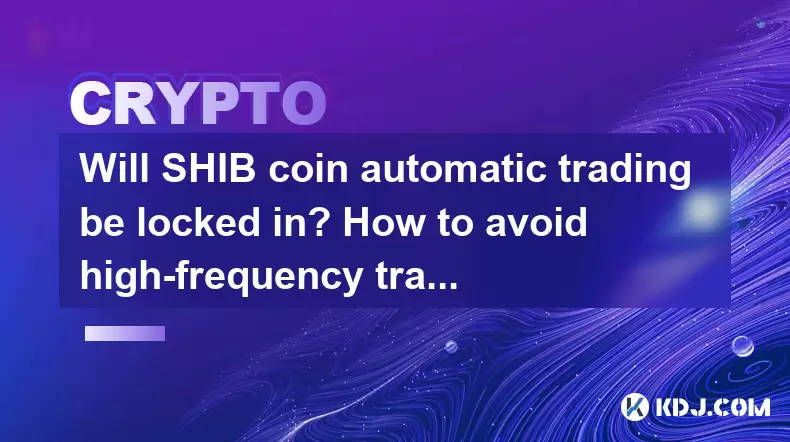-
 Bitcoin
Bitcoin $119000
-2.21% -
 Ethereum
Ethereum $4315
1.01% -
 XRP
XRP $3.151
-3.11% -
 Tether USDt
Tether USDt $0.0000
0.00% -
 BNB
BNB $808.5
-0.71% -
 Solana
Solana $175.8
-4.21% -
 USDC
USDC $0.9999
0.00% -
 Dogecoin
Dogecoin $0.2250
-3.92% -
 TRON
TRON $0.3469
1.77% -
 Cardano
Cardano $0.7818
-3.81% -
 Chainlink
Chainlink $21.47
-2.10% -
 Hyperliquid
Hyperliquid $43.30
-6.81% -
 Stellar
Stellar $0.4370
-2.84% -
 Sui
Sui $3.682
-4.40% -
 Bitcoin Cash
Bitcoin Cash $590.8
2.67% -
 Hedera
Hedera $0.2484
-5.20% -
 Ethena USDe
Ethena USDe $1.001
0.00% -
 Avalanche
Avalanche $23.10
-4.29% -
 Litecoin
Litecoin $119.2
-3.96% -
 Toncoin
Toncoin $3.409
0.90% -
 UNUS SED LEO
UNUS SED LEO $9.016
-1.29% -
 Shiba Inu
Shiba Inu $0.00001304
-3.82% -
 Uniswap
Uniswap $11.18
1.33% -
 Polkadot
Polkadot $3.913
-3.51% -
 Cronos
Cronos $0.1672
-3.08% -
 Dai
Dai $1.000
0.02% -
 Ethena
Ethena $0.7899
-4.70% -
 Bitget Token
Bitget Token $4.400
-1.23% -
 Pepe
Pepe $0.00001132
-5.93% -
 Monero
Monero $257.9
-6.44%
Will SHIB coin automatic trading be locked in? How to avoid high-frequency trading risks?
SHIB automatic trading involves using algorithms to trade 24/7, but locking it in poses risks like market volatility and technical failures; diversify and monitor to mitigate these.
May 20, 2025 at 04:28 am

Understanding SHIB Coin Automatic Trading
SHIB, or Shiba Inu, is a popular cryptocurrency that has garnered significant attention within the crypto community. Automatic trading, often referred to as algorithmic trading, involves using computer programs to buy and sell SHIB based on predefined criteria. These algorithms can execute trades at a speed and frequency that is impossible for a human trader to match. However, the question arises: will SHIB coin automatic trading be locked in, and how can one avoid the risks associated with high-frequency trading?
The Concept of Locking in Automatic Trading
The term "locking in" automatic trading refers to the practice of setting up trading algorithms in such a way that they continue to operate without manual intervention. This can be beneficial for traders who want to take advantage of market opportunities 24/7 without having to monitor the markets constantly. However, it also comes with risks, especially in the volatile world of cryptocurrencies like SHIB.
To lock in automatic trading for SHIB, traders typically use trading bots or platforms that support algorithmic trading. These platforms allow users to set up their trading strategies and let the algorithms execute trades based on those strategies. However, the decision to lock in automatic trading is not a feature that can be toggled on or off by a central authority; it is a choice made by individual traders.
Risks Associated with High-Frequency Trading of SHIB
High-frequency trading (HFT) involves executing a large number of orders at very fast speeds. While HFT can be profitable, it also comes with significant risks, especially when trading SHIB, which is known for its volatility. Some of the key risks include:
- Market Volatility: SHIB can experience sudden and sharp price movements, which can lead to significant losses if not managed properly.
- Technical Failures: High-frequency trading relies heavily on technology. Any technical glitch or failure can result in substantial financial losses.
- Regulatory Risks: The regulatory environment for cryptocurrencies is still evolving, and changes in regulations can impact the legality and profitability of HFT.
- Liquidity Risks: High-frequency trading can sometimes exacerbate liquidity issues, leading to slippage and other trading challenges.
Strategies to Avoid High-Frequency Trading Risks with SHIB
To mitigate the risks associated with high-frequency trading of SHIB, traders can employ several strategies:
- Diversification: Instead of focusing solely on SHIB, traders can diversify their portfolio across different cryptocurrencies to spread the risk.
- Risk Management: Implementing strict risk management rules, such as setting stop-loss orders and position sizing, can help limit potential losses.
- Monitoring and Adjusting: While the idea of locking in automatic trading is appealing, it is crucial to periodically review and adjust the trading algorithms to ensure they are performing as expected.
- Using Reliable Platforms: Choosing a reputable and reliable trading platform that supports SHIB trading can help mitigate technical risks.
Setting Up Automatic Trading for SHIB: A Step-by-Step Guide
Setting up automatic trading for SHIB involves several steps. Here is a detailed guide on how to do it:
- Choose a Trading Platform: Select a platform that supports SHIB trading and offers features for automatic trading. Popular choices include Binance, Coinbase Pro, and KuCoin.
- Create an Account: Sign up for an account on the chosen platform and complete the necessary verification processes.
- Deposit Funds: Deposit the required amount of funds into your trading account. Ensure that you have enough SHIB or other cryptocurrencies to start trading.
- Set Up a Trading Bot: Navigate to the platform's section for trading bots or algorithmic trading. Some platforms offer built-in bots, while others allow you to connect third-party bots.
- Configure the Trading Strategy: Define your trading strategy, including entry and exit points, stop-loss levels, and other parameters. This can be done using the platform's interface or by writing custom scripts if supported.
- Backtest the Strategy: Before going live, backtest your trading strategy using historical data to see how it would have performed in the past.
- Go Live: Once satisfied with the backtesting results, activate the trading bot to start executing trades automatically.
Monitoring and Adjusting Your SHIB Automatic Trading Strategy
Even after setting up automatic trading for SHIB, it is essential to monitor and adjust your strategy regularly. Here are some tips for doing so:
- Regular Reviews: Schedule regular reviews of your trading strategy to assess its performance and make necessary adjustments.
- Stay Informed: Keep up-to-date with the latest news and developments in the cryptocurrency market, as these can impact SHIB prices and your trading strategy.
- Adjust Parameters: Based on your reviews and market changes, adjust the parameters of your trading bot to optimize performance.
- Use Alerts: Set up alerts on your trading platform to notify you of significant market movements or when certain trading conditions are met.
Frequently Asked Questions
Q: Can I use multiple trading bots for SHIB at the same time?
A: Yes, it is possible to use multiple trading bots for SHIB simultaneously. However, you should ensure that the strategies of these bots do not conflict with each other, as this could lead to unintended trades and potential losses.
Q: How can I protect my SHIB trading account from unauthorized access?
A: To protect your SHIB trading account, use strong, unique passwords, enable two-factor authentication (2FA), and regularly monitor your account for any suspicious activity. Additionally, consider using a hardware wallet to store your SHIB offline for added security.
Q: What should I do if my SHIB trading bot experiences a technical failure?
A: If your SHIB trading bot experiences a technical failure, immediately stop the bot and assess the situation. Contact the support team of your trading platform for assistance, and consider switching to a different bot or platform if the issue persists.
Q: Is it possible to manually override my SHIB automatic trading strategy?
A: Yes, most trading platforms allow you to manually override your automatic trading strategy. You can typically pause or stop the bot at any time and execute trades manually if needed. Always check the specific features of your chosen platform to understand how to do this.
Disclaimer:info@kdj.com
The information provided is not trading advice. kdj.com does not assume any responsibility for any investments made based on the information provided in this article. Cryptocurrencies are highly volatile and it is highly recommended that you invest with caution after thorough research!
If you believe that the content used on this website infringes your copyright, please contact us immediately (info@kdj.com) and we will delete it promptly.
- PumpFun (PUMP) Price: Riding the Meme Coin Wave or Facing a Wipeout?
- 2025-08-12 16:50:12
- Arctic Pablo Coin: Meme Coin Growth Redefined?
- 2025-08-12 16:50:12
- Ether ETFs Surge: Inflows and Bull Signs Point to $4K ETH?
- 2025-08-12 16:30:12
- Bitcoin, Crypto Market, and CPI Anticipation: A New York Minute on Volatility
- 2025-08-12 16:30:12
- Bitcoin, CPI, and Market Fears: Navigating the Crypto Landscape
- 2025-08-12 15:10:13
- BTC Traders Eye ETH Targets as CPI Looms: A New York Minute
- 2025-08-12 15:10:13
Related knowledge

How to purchase Aragon (ANT)?
Aug 09,2025 at 11:56pm
Understanding Aragon (ANT) and Its PurposeAragon (ANT) is a decentralized governance token that powers the Aragon Network, a platform built on the Eth...

Where to trade Band Protocol (BAND)?
Aug 10,2025 at 11:36pm
Understanding the Role of Private Keys in Cryptocurrency WalletsIn the world of cryptocurrency, a private key is one of the most critical components o...

What is the most secure way to buy Ocean Protocol (OCEAN)?
Aug 10,2025 at 01:01pm
Understanding Ocean Protocol (OCEAN) and Its EcosystemOcean Protocol (OCEAN) is a decentralized data exchange platform built on blockchain technology,...

Where can I buy UMA (UMA)?
Aug 07,2025 at 06:42pm
Understanding UMA and Its Role in Decentralized FinanceUMA (Universal Market Access) is an Ethereum-based decentralized finance (DeFi) protocol design...

What exchanges offer Gnosis (GNO)?
Aug 12,2025 at 12:42pm
Overview of Gnosis (GNO) and Its Role in the Crypto EcosystemGnosis (GNO) is a decentralized prediction market platform built on the Ethereum blockcha...

How to buy Storj (STORJ) tokens?
Aug 09,2025 at 07:28am
Understanding Storj (STORJ) and Its Role in Decentralized StorageStorj is a decentralized cloud storage platform that leverages blockchain technology ...

How to purchase Aragon (ANT)?
Aug 09,2025 at 11:56pm
Understanding Aragon (ANT) and Its PurposeAragon (ANT) is a decentralized governance token that powers the Aragon Network, a platform built on the Eth...

Where to trade Band Protocol (BAND)?
Aug 10,2025 at 11:36pm
Understanding the Role of Private Keys in Cryptocurrency WalletsIn the world of cryptocurrency, a private key is one of the most critical components o...

What is the most secure way to buy Ocean Protocol (OCEAN)?
Aug 10,2025 at 01:01pm
Understanding Ocean Protocol (OCEAN) and Its EcosystemOcean Protocol (OCEAN) is a decentralized data exchange platform built on blockchain technology,...

Where can I buy UMA (UMA)?
Aug 07,2025 at 06:42pm
Understanding UMA and Its Role in Decentralized FinanceUMA (Universal Market Access) is an Ethereum-based decentralized finance (DeFi) protocol design...

What exchanges offer Gnosis (GNO)?
Aug 12,2025 at 12:42pm
Overview of Gnosis (GNO) and Its Role in the Crypto EcosystemGnosis (GNO) is a decentralized prediction market platform built on the Ethereum blockcha...

How to buy Storj (STORJ) tokens?
Aug 09,2025 at 07:28am
Understanding Storj (STORJ) and Its Role in Decentralized StorageStorj is a decentralized cloud storage platform that leverages blockchain technology ...
See all articles

























































































